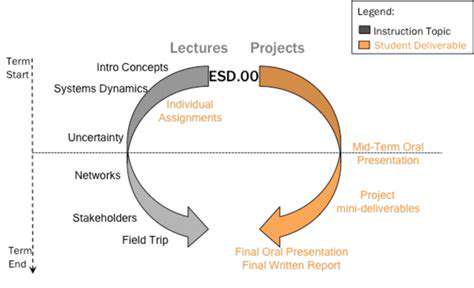Life with My Blind Pet
Creating a Safe and Predictable Environment
Creating a Predictable Routine
Establishing a consistent daily routine is crucial for both you and your blind pet. A predictable schedule helps them anticipate events, reducing anxiety and promoting a sense of security. This includes regular feeding times, playtime, and rest periods. Consistency in these areas will help your pet feel more comfortable and confident in their surroundings, making them less likely to exhibit anxious behaviors.
Visual cues can be replaced with auditory ones. For example, if your pet typically anticipates walks by seeing you put on your shoes, use a specific verbal cue or a bell to signal the start of the walk. This creates a strong association between the sound or action and the expected activity, fostering a predictable experience.
Modifying Your Home for Accessibility
Adapting your home to accommodate your blind pet's needs will significantly impact their safety and well-being. Removing tripping hazards, such as loose wires or rugs, and ensuring clear pathways throughout the house will prevent accidents and promote freedom of movement. This also means considering furniture placement, ensuring there are no obstacles that could block their usual routes.
Using tactile markers, such as textured tape or strategically placed furniture, can guide your pet safely around the house. This will allow them to navigate more easily and confidently, reducing stress and promoting independence. Consider the use of visual cues, such as brightly colored items, to help your pet identify specific areas, like their food or water bowls.
Sensory Enrichment for Engagement
Blind pets rely heavily on their other senses to interact with the world around them. Providing a rich and stimulating environment that appeals to their remaining senses is paramount. This might include incorporating textured toys and objects to explore and engage with, as well as introducing stimulating scents like lavender or chamomile to help them feel calmer and more at ease.
Consider using sound-based activities to engage your pet. Classical music or nature soundscapes can be calming and enriching. If you have other pets or children, establish clear communication protocols to minimize unexpected noises that could startle your blind pet. This kind of sensory enrichment helps maintain your pet's mental stimulation and overall well-being.
Understanding and Addressing Potential Challenges
Blind pets might exhibit certain behaviors that are different from sighted pets. Understanding these behaviors, such as increased vocalization, changes in eating habits, or heightened anxiety, is key to addressing any potential issues promptly. Observe your pet's reactions to various situations and learn to identify patterns that signal distress or discomfort. This understanding allows you to intervene proactively and create a more supportive environment.
If you notice any significant changes in behavior, consult with a veterinarian or a certified animal behaviorist. They can offer valuable insights into potential underlying causes and suggest strategies for effectively managing any concerns. Proactive intervention is vital for ensuring your pet's health and happiness.
Training and Socialization Strategies
Training your blind pet is crucial for their safety and well-being. Focus on tactile cues and verbal commands to teach essential commands such as stay, come, and leave it. Remember that consistency and positive reinforcement are key to effective training. By utilizing these strategies, you can help your blind pet feel secure and confident in their ability to navigate their environment and interact with their surroundings.
Socialization is also important for blind pets. Introduce them to new people and animals gradually, in a controlled and supportive environment. This will help them develop appropriate social skills and reduce anxiety associated with new interactions. Positive experiences during socialization will build their confidence and promote a sense of security in social situations.
Communicating Through Touch and Sound

Tactile Communication: A Foundation of Human Connection
Touch is a fundamental aspect of human communication, often overlooked in our increasingly digital world. From the comforting pat on the back to the firm handshake, tactile communication conveys a wealth of information, unspoken emotions, and nuanced social cues. It plays a crucial role in building trust, expressing empathy, and fostering strong relationships. The physical act of touching can be incredibly powerful, influencing how we perceive and interact with others. We instinctively understand the meaning behind a gentle touch versus a forceful one, a subtle gesture versus a deliberate display.
The importance of touch transcends cultures and ages. Infants rely heavily on tactile stimulation for development, and throughout our lives, physical contact continues to be vital for emotional well-being. The warmth of a hug, the gentle caress of a loved one, or the reassuring grip of a friend can provide solace and comfort in times of stress and hardship. These subtle displays of affection can often speak volumes, providing a sense of security and belonging that words alone cannot express.
Beyond the Physical: The Subconscious Impact of Touch
While the physical act of touching is obvious, the impact it has on our subconscious mind is equally profound. Studies have shown that touch can influence our physiological responses, such as lowering stress hormones and increasing feelings of relaxation. This is especially true in the context of social interactions. A simple touch can create a sense of connection and mutual understanding, often leading to more positive and productive communication overall.
Furthermore, the type of touch and the context in which it occurs significantly affects its interpretation. A pat on the back during a pep talk has a different meaning than a sudden, forceful grab. Understanding these nuances is key to effective communication and navigating social situations successfully. The subtext of touch is often more meaningful than the explicit message, making it a powerful and sometimes complex form of nonverbal communication.
Cultural Variations in Touching Behaviors
It's crucial to acknowledge that cultural norms surrounding touch vary significantly. What might be considered a friendly gesture in one culture could be offensive or inappropriate in another. Understanding these cultural differences is essential for avoiding misunderstandings and fostering respectful interactions. Awareness of these diverse customs is critical to successful intercultural communication. For example, in some cultures, direct physical contact like hugging or hand-holding is common among friends and family, while in others, more reserved forms of physical contact are the norm. Knowing these variations allows individuals to adapt their communication style appropriately and avoid causing offense.
Different social contexts also dictate the appropriateness of touch. A handshake in a business setting is acceptable, while a hug might be more suitable among close friends. Recognizing these social cues is vital to navigating social situations confidently and effectively.
The Role of Touch in Therapeutic Settings
Touch is an integral part of many therapeutic approaches, particularly in fields like physiotherapy, occupational therapy, and counseling. The use of touch in these settings can be highly beneficial, promoting healing, both physical and emotional. From massage therapy to supportive touch during counseling sessions, the therapeutic power of touch has been recognized and utilized for centuries. The application of touch can be a powerful tool for communication, facilitating understanding and fostering a sense of safety and trust within the therapeutic relationship.
Physical contact in these settings can ease anxiety, promote relaxation, and encourage emotional expression, making it an essential component of the treatment process.

Read more about Life with My Blind Pet
Hot Recommendations
- Review: [Specific Brand] Small Animal Cage
- Why Rescuing Pets Saves Lives
- Best Pet First Aid Kits [What to Include]
- How to Help Stray Animals in Your Community
- Guide to Adopting a Pet When You Have Kids
- Top Reptile Heat Lamps
- Heartwarming Rescue Stories That Will Inspire You
- Review: [Specific Brand] Bird Cage
- Best Aquarium Filters [2025 Review]
- Review: [Specific Brand] Smart Litter Box








![Guide to Winter Pet Care [Protecting Paws]](/static/images/33/2025-06/PreventingSaltandChemicalExposure3ASafeguardingPawHealth.jpg)
![Review: [Specific Brand] Pet Water Fountain](/static/images/33/2025-07/ProductOverviewandFeatures.jpg)

